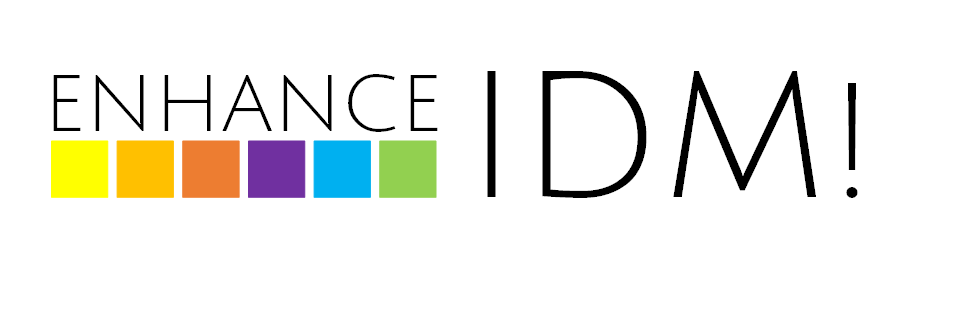To support you as a programme leader, teacher, degree coordinator or as administrative staff, an e-learning has been developed. It covers all relevant areas of planning and action when designing inclusive curricula. The e-learning is based on the HEAD CD frame. This has proven to be a working framework to address inclusion and diversity management issues during the entire student life cycle, starting from access and leading to student success triggered by student engagement.
E-Learning
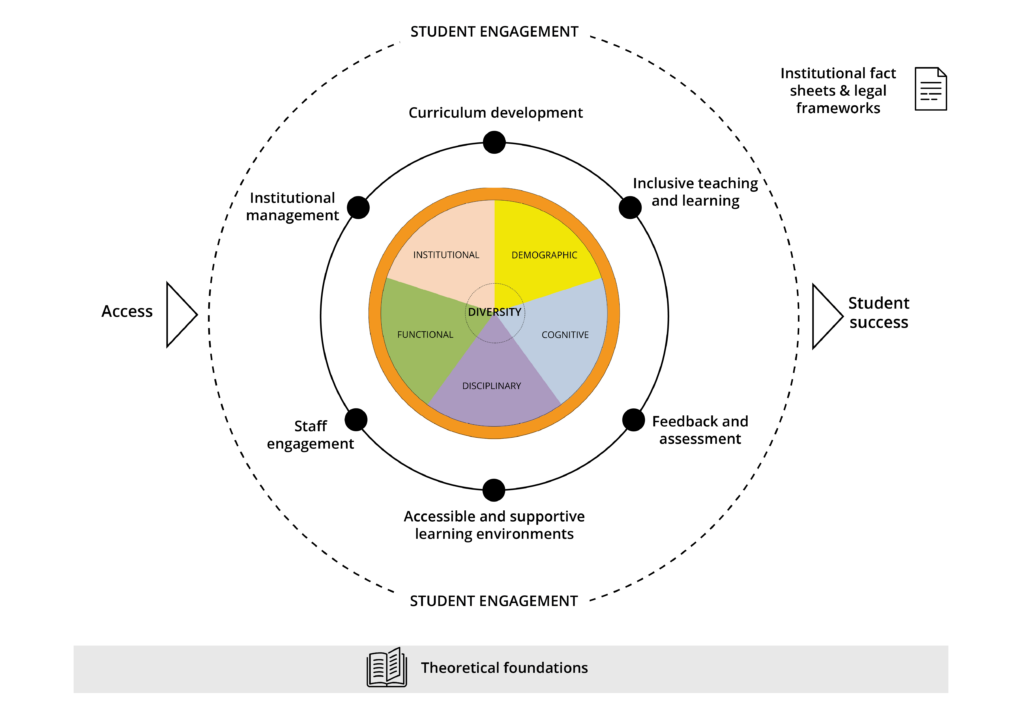
The framework may certainly qualify as a helpfull frame of reference for the holistic process of making curricula more inlusive. It provides relevant areas of activity with practical advice for each of them. Hence, it has the potential to act as a gate-opener in curriculum design and delivery. As such, it offers many starting points for teaching staff, managers or program leaders to pave the way for successful academic development of all students.
At the core you find the HEAD (Higher Education Awareness for Diversity) Wheel that was designed to serve as a frame of reference for a holistic diversity management embracing five interconnected diversity segments
- Demographic diversity like age, gender, sexual orientation etc.
- Cognitive diversity including different value and knowledge structures
- (Trans- and Inter-)Disciplinary diversity
- Functional diversity and
- Institutional diversity
For a more detailed explanation watch this video:
Placed around the HEAD Wheel are six topics that cover a curriculum design process. Starting with boundary conditions set by institutional management, from the curriculum development process, to inclusive teaching and learning, feedback and assessment, accessible and supportive learning environments up to staff engagement.
Access
Access deals with two main issues: Who gets to participate in higher education and what support structures are available for admitted students.
Student engagement
Student engagement is strongly related to student success. To adequately support students along their way awareness of their diversity is required. A diversity-sensitive approach needs to be adopted as can be seen in the inner circle of the framework, where demographic, cognitive, disciplinary, functional and institutional diversity is foregrounded.
Institutional management
Designing and running study programs is always embedded in an institutional context. Conditions are inclusive when the institution really invests resources to enable all students to participate in academic life.
Curriculum development
Every student has special needs, not only thinking about disabilities but also about family care, financial needs, individual interests or learning habits. Therefore, curriculum design aimed at creating programs suitable for all students.
Inclusive teaching and learning
For teaching staff it is highly important to get to know their students. Ideally the materials, resources and examples provided positively embrace the diversity of students’ backgrounds. Learning is student-centred and interactive, engaging all students through a range of methods.
Feedback and assessment
Feedback is paramount for successful learning and improvement of teaching. Assessments are considered to be inclusive, if students are able to demonstrate their capabilities in the best way possible. The assessment cycle should be provided for students to enter into dialogue with staff in order to develop assessment literacy.
Accessible and supportive learning environments
In physical just like in digital learning spaces, learning resources and technologies should be utilized effectively with additional and alternative resources when required. Timetabling arrangements should be flexible to allow students to participate fully and take account of students’ commitments and responsibilities.
Staff engagement
Staff take responsibility for students’ academic development through curriculum delivery and extra-curricular activities, and support them along their journey, thus building effective working student-faculty relationships. They are constantly encouraged to engage in reflective loops where they further their work to develop, lead, and support the embedding of equality and diversity in the curriculum through recruitment, induction, review, recognition and progression activities.
To learn more about the HEAD-CD frame as a whole watch this video:
For a short demonstration of how the e-learning is set up we have collected some screenshots. As an example you can dig into inclusive teaching and learning:
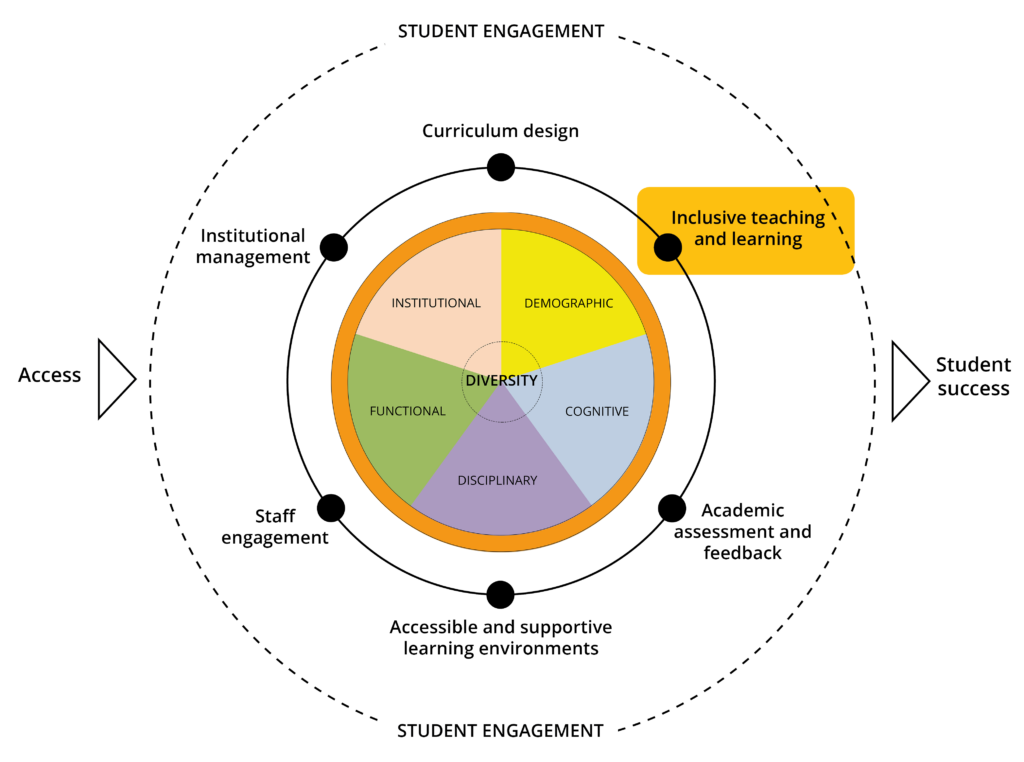
Each topic is briefly introduced and split up into subtopics. Here you will find more on diversity in teamwork.

At first you “hear” some student and staff perspectives.
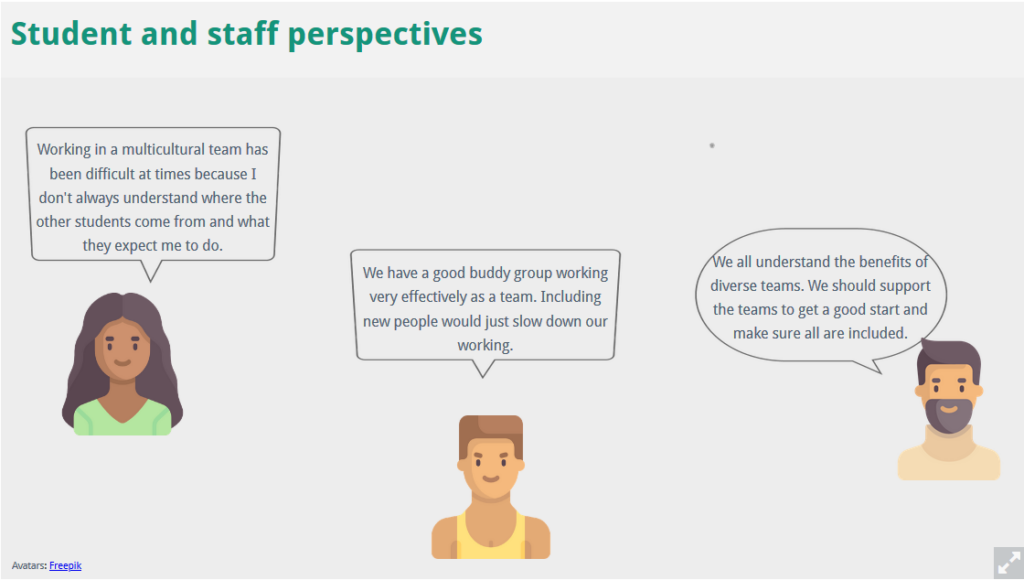
Then some explanations and facts around the subject are given:
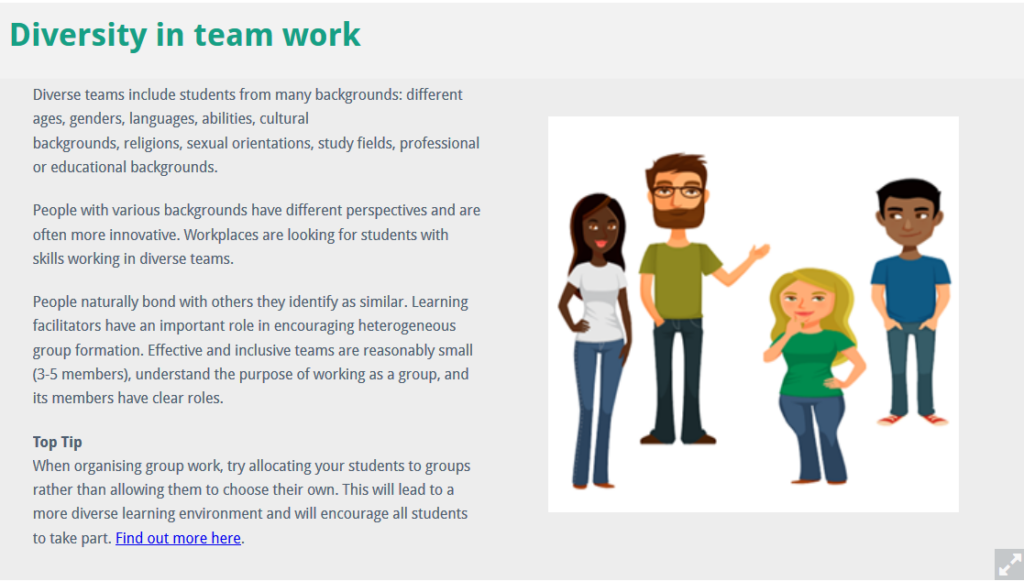

You might then be interested in examples of how to deal with issues around the topic in focus.
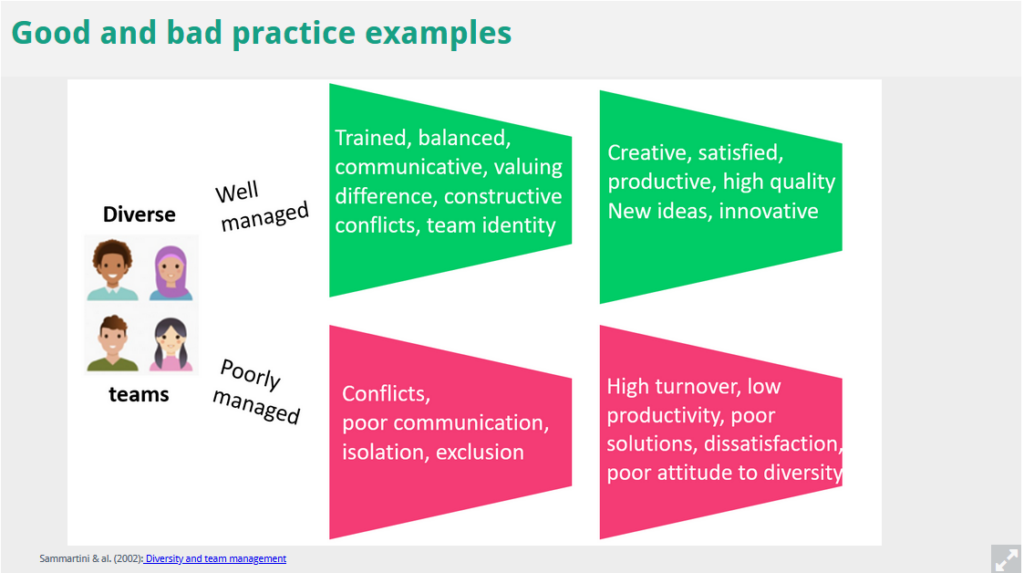
Where available you will find research, tips, and further resources.

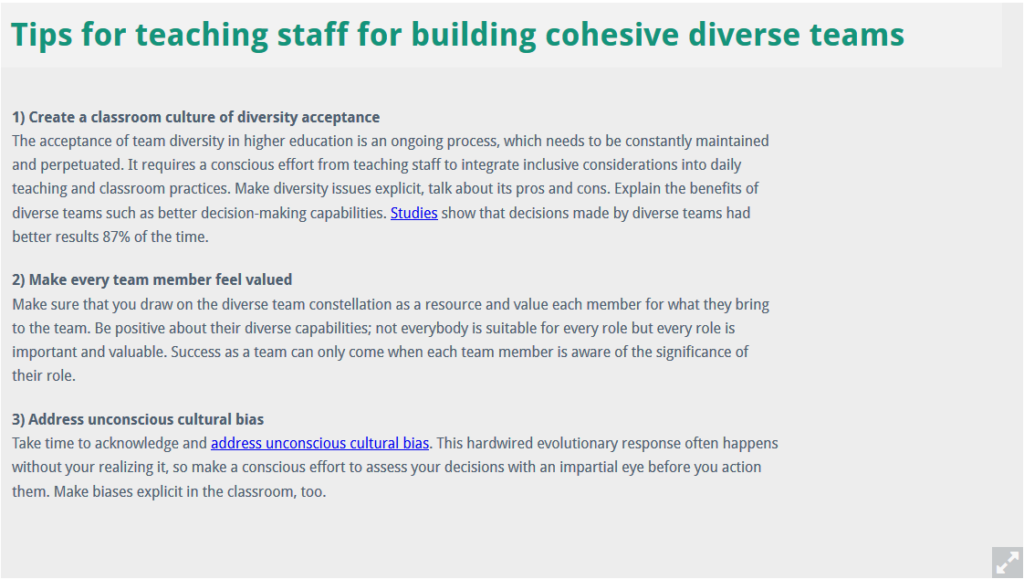
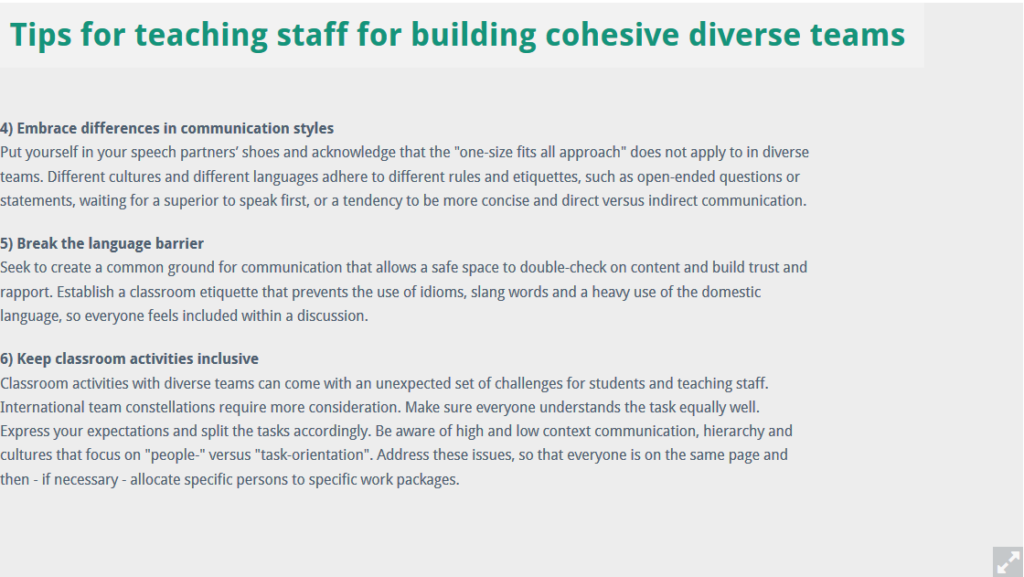

If we have caught your interest and you would like to see more, please contact silke.preymann@fh-ooe.at
The e-learning can be found at: https://assessment.fh-ooe.at/course/view.php?id=430. (When entering the webiste please click on “Anmelden als Gast”/ “register as a guest”. You will then not need any further password. )
